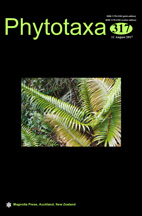Abstract
In this paper, Carex chungii and other five names at species rank, plus one variety and one form, all from of C. sect. Mitratae, were revised. They constitute a group of morphologically very similar taxa, difficult to tell apart. Our study was based on literature survey, fieldwork, herbarium specimens, statistical analysis of morphological characters and SEM observations of achenes and perigynia. Analysis of morphological data of 94 individuals from eleven populations using principal component analysis (PCA) revealed five clusters, which we consequently considered to correspond to five species. The achenes of Carex genkaiensis were strikingly different from all the other species regarding achene apex contracted into a 0.2–0.5 mm long neck-like appendage (vs. into a discoid-annulate style-base), as well as its perigynium indumentum (pubescent vs. sparsely pubescent). Carex anhuiensis, C. xuanchengensis and C. truncatirostris f. erostris are all synonymized to C. truncatirostris. The previously recognized Carex kamagariensis from Japan is synonymized to C. chungii. Carex chungii var. rigida is recognized as specific rank and the new name C. nanpingensis is proposed. Our study is the first effort to address the taxonomy of this complicate group as a whole in its entire range.

